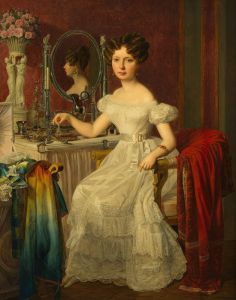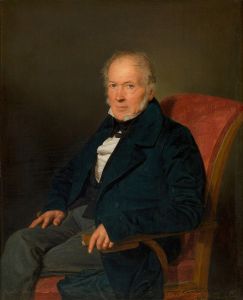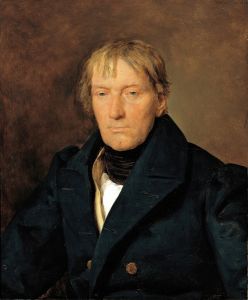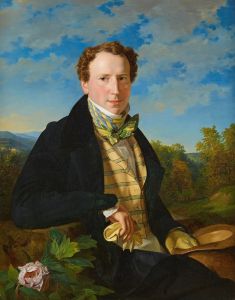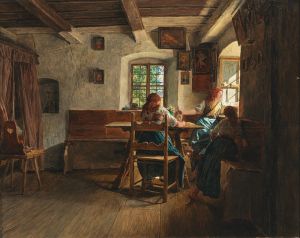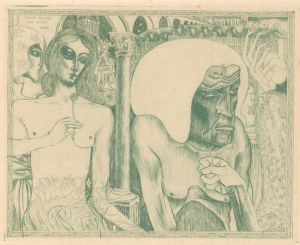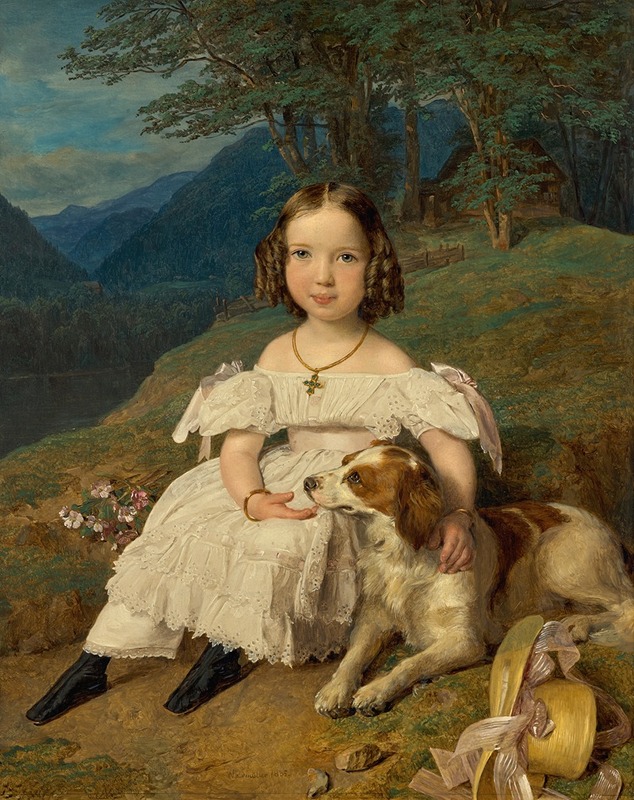
Julia Comtesse Apraxin
A hand-painted replica of Ferdinand Georg Waldmüller’s masterpiece Julia Comtesse Apraxin, meticulously crafted by professional artists to capture the true essence of the original. Each piece is created with museum-quality canvas and rare mineral pigments, carefully painted by experienced artists with delicate brushstrokes and rich, layered colors to perfectly recreate the texture of the original artwork. Unlike machine-printed reproductions, this hand-painted version brings the painting to life, infused with the artist’s emotions and skill in every stroke. Whether for personal collection or home decoration, it instantly elevates the artistic atmosphere of any space.
Ferdinand Georg Waldmüller, an Austrian painter renowned for his contributions to the Biedermeier period, created the portrait titled Julia Comtesse Apraxin. This artwork is a striking example of Waldmüller’s mastery in portraiture, showcasing his ability to capture the individuality and elegance of his subjects with meticulous attention to detail.
The painting depicts Julia Comtesse Apraxin, a member of the Russian aristocracy. The Apraxin family was a prominent noble family in Russia, with a history of military and political influence. Julia’s exact identity and her connection to Waldmüller remain limited in historical records, but her portrayal in this work reflects the artist’s skill in rendering the refined demeanor and status of his sitters. The portrait is believed to have been commissioned, as was common practice among the nobility during this period, to commemorate her social standing and personal significance.
Waldmüller’s technique in this painting exemplifies his characteristic style, blending realism with a sense of warmth and vitality. The composition focuses on Julia, who is elegantly dressed, with her attire and accessories reflecting her aristocratic status. The artist’s use of light and shadow enhances the three-dimensionality of the figure, while the delicate rendering of textures, such as fabric and skin, demonstrates his technical proficiency.
The background of the portrait is understated, a typical feature of Waldmüller’s portraits, which allows the viewer’s attention to remain on the subject. This simplicity also serves to highlight the sitter’s features and attire, emphasizing her presence and personality. The painting is a testament to Waldmüller’s ability to combine technical precision with an intimate portrayal of his subjects.
Ferdinand Georg Waldmüller (1793–1865) was one of the leading artists of the Biedermeier period, a time characterized by a focus on domesticity, individualism, and detailed realism in art. His works often included portraits, landscapes, and genre scenes, and he is celebrated for his contribution to 19th-century Austrian art. Waldmüller’s portraits, in particular, are noted for their lifelike quality and the insight they provide into the social and cultural milieu of his time.
The current location of Julia Comtesse Apraxin is not widely documented, and further details about the painting’s provenance or its historical context are scarce. However, it remains an important example of Waldmüller’s portraiture and his ability to capture the essence of his subjects with remarkable clarity and sensitivity.









